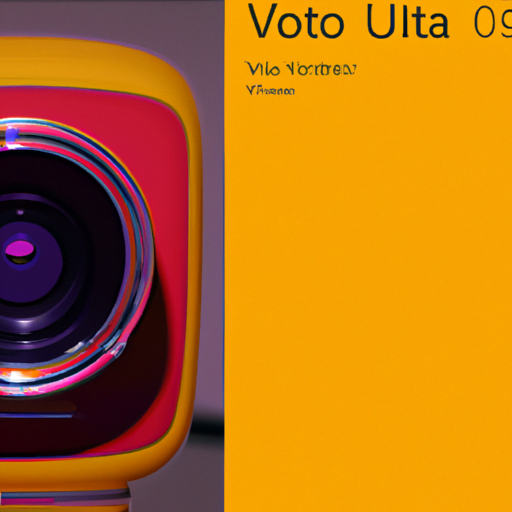
-
Table of Contents
Designing for Voice User Interfaces (VUI)

In recent years, voice user interfaces (VUI) have gained significant popularity and have become an integral part of our daily lives. From virtual assistants like Siri and Alexa to voice-controlled smart home devices, VUI has revolutionized the way we interact with technology. As designers, it is crucial to understand the unique challenges and opportunities that come with designing for VUI. In this article, we will explore the key principles and best practices for designing effective voice user interfaces.
The Rise of Voice User Interfaces
Voice user interfaces have seen a rapid rise in popularity due to advancements in natural language processing and speech recognition technologies. According to a report by Juniper Research, it is estimated that there will be 8 billion digital voice assistants in use by 2023. This exponential growth is driven by the convenience and accessibility that VUI offers to users.
One of the key reasons for the popularity of VUI is its hands-free and eyes-free nature. Users can interact with voice assistants while performing other tasks, such as cooking or driving, without the need to physically interact with a device. This makes VUI an ideal interface for situations where users have limited or no access to screens.
Understanding User Needs and Context
Designing for VUI requires a deep understanding of user needs and the context in which the interface will be used. Unlike graphical user interfaces (GUI), VUI relies solely on voice interactions, making it essential to design intuitive and user-friendly experiences.
When designing for VUI, it is crucial to consider the following factors:
- User Goals: Understand the primary goals and tasks users want to accomplish through voice interactions. This will help in designing a streamlined and efficient user experience.
- Environment: Consider the environment in which the VUI will be used. For example, if the interface is intended for a noisy environment, the system should be able to accurately recognize and interpret user commands.
- Persona: Create user personas to understand the characteristics, preferences, and limitations of the target audience. This will help in tailoring the VUI to meet their specific needs.
Designing Conversational Experiences
One of the key aspects of designing for VUI is creating conversational experiences that feel natural and engaging. Unlike traditional interfaces, VUI relies on spoken language, making it essential to design interactions that mimic human conversation.
Here are some best practices for designing conversational experiences:
- Use Natural Language: Design the VUI to understand and respond to natural language inputs. This includes handling variations in speech patterns, accents, and dialects.
- Provide Feedback: Ensure that the VUI provides clear and timely feedback to users. This can be in the form of spoken responses, visual cues, or haptic feedback.
- Keep it Concise: Design interactions that are concise and to the point. Avoid long-winded responses that can lead to user frustration.
- Offer Guidance: Guide users through the conversation by providing prompts and suggestions. This helps users understand the available options and reduces cognitive load.
Designing for Multimodal Experiences
While VUI primarily relies on voice interactions, it is important to consider multimodal experiences that combine voice with other input and output modalities. This allows users to interact with the system using a combination of voice, touch, and gestures.
Here are some considerations for designing multimodal experiences:
- Visual Feedback: Provide visual feedback to complement voice interactions. This can include displaying relevant information on a screen or using light indicators to indicate system status.
- Gesture and Touch: Design the VUI to support gestures and touch interactions where appropriate. This can enhance the user experience and provide additional input options.
- Seamless Transitions: Ensure smooth transitions between different modalities. For example, if a user starts a conversation using voice, they should be able to seamlessly switch to touch or gestures without any disruption.
Testing and Iteration
Testing and iteration are crucial for designing effective VUI. Conducting user testing and gathering feedback helps identify usability issues and areas for improvement. It is important to iterate on the design based on user feedback to create a seamless and intuitive experience.
Here are some methods for testing and iterating on VUI designs:
- Usability Testing: Conduct usability tests with representative users to evaluate the effectiveness and efficiency of the VUI. This can help identify pain points and areas for improvement.
- Prototype and Iterate: Create prototypes of the VUI and gather feedback from users. Iterate on the design based on the feedback to refine the user experience.
- Analytics and Data: Utilize analytics and data to gain insights into user behavior and usage patterns. This can help identify areas of improvement and inform design decisions.
Case Study: Amazon Echo
One of the most successful examples of VUI is the Amazon Echo, powered by the virtual assistant Alexa. The Echo provides a seamless voice-controlled experience for tasks such as playing music, setting reminders, and controlling smart home devices.
Amazon has invested heavily in designing a conversational and intuitive experience for the Echo. The device understands natural language inputs and provides timely feedback through spoken responses. The Echo also supports multimodal experiences by integrating with other devices, such as smartphones and tablets, to provide visual feedback and additional input options.
Conclusion
Designing for voice user interfaces (VUI) requires a deep understanding of user needs, context, and conversational design principles. By considering factors such as user goals, environment, and persona, designers can create intuitive and engaging VUI experiences. Incorporating multimodal interactions and conducting thorough testing and iteration are essential for creating effective VUI designs. As VUI continues to evolve, designers must stay updated with the latest advancements and best practices to deliver exceptional user experiences.
